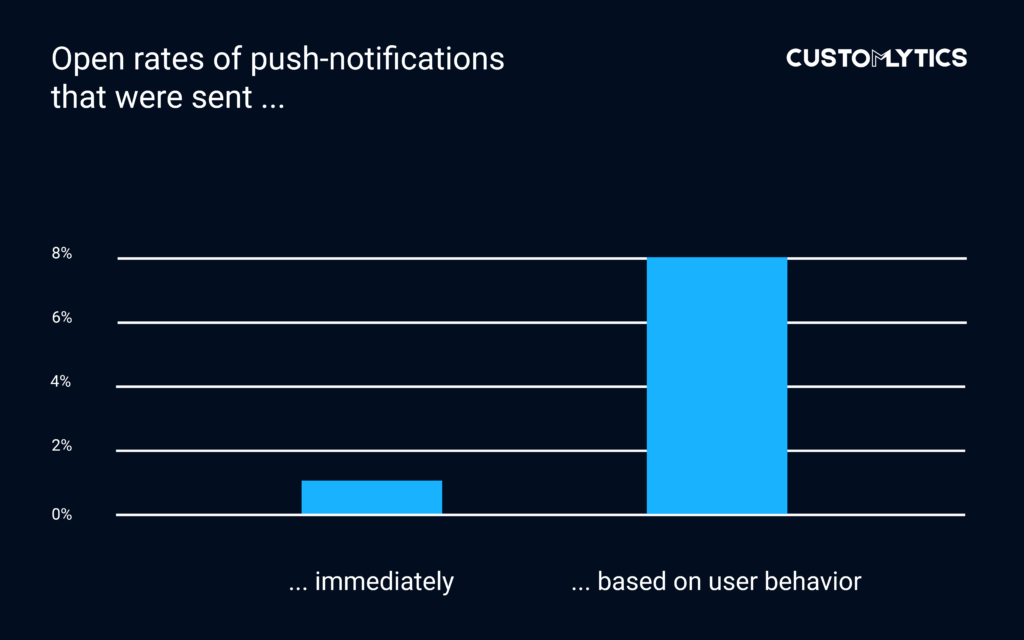Author: Steffen Meyer, Mobile Marketing Content Specialist
What would you rather receive in your physical mailbox: a travel prospect highlighting your favorite sorts of trips or a mass-produced leaflet featuring holiday proposals you would never spend money on? The answer is easy and it stems from simple truth: Personal messages are more charming than generic ones.
With all the possibilities of user data in digital marketing, app marketers have to acknowledge this and customize their messages to individual needs and tastes. This is especially true when it comes to push notifications, because these messages can quickly annoy users and may – in the worst case – make them uninstall the app.
So it is wise to create and send push notifications based on individual flavor and not just on good luck or a hunch. This is where user segmentation comes in.
Here, you divide users into segments and create individual message strategies for these groups. You can divide users into cohorts based on information such as
- Demographics (Age, Gender, Nationality)
- Social background (education, income, marital status)
- Localization (country, city, district)
- Psychographic data (interests, beliefs)
- Behavioral data (time spent with a product, login frequency)
Having done that, you can create tailor-made campaigns for these groups and appeal to their individual needs. For example, a food delivery app can promote special offers in the vicinity of users in a certain city and a fitness app can deliver different messages to old and young users, advertising online courses that fit the corresponding age group.
Furthermore, you can set up campaigns for users that haven’t opened your app for a long time (“Have you forgotten about us?”), for those that are sometimes active (“Look at this new feature”) and for those that are very loyal (“We got a present for you”).
The possibilities are limitless (have a look at this blogpost by CleverTap for more examples) and they are necessary.

According to a study by Twilio Segment (a company that offers user segmentation solutions), not only do 69% of consumers say they appreciate personalization, 45% of them say they’re likely to take their business elsewhere, if brands fail to offer a personalized experience. Judging from these insights, you may actually lose customers when you just bet on generic messages.
Of course, what users say and what they do, sometimes differ from one another, but one study provides valuable data that underscores the success of personalized messaging.
Leanplum (a company that offers solutions for user personalization) analyzed 1.5 billion push notifications and found out that alerts based on user actions proved to be massively successful.
This means for example, after a user has booked a trip with a travel app, the app sends a push notification with hotel deals in the destination region. A music app sends an alert when a new album gets released by an artist the user recently listened to.
These reactive push notifications had an open rate of 8% – which was a whopping 800% greater than generic notifications which were sent immediately.

Setting up these alerts is much more complex than segmenting users into age or gender groups. If you are interested to learn more, have a chat with our consultants who are always happy to help.
They will also delve deeper into the topic and provide valuable tips and tricks on how to get the most out of your user data and how to gather it in the first place. User segmentation strategies can really pay off, though knowledge, persistence, patience and evaluation is needed to make them really successful.
💡 Knowledge sharing is at the core of what we do. Get our Marketing Master Map, sign up for our newsletter and become part of our community on LinkedIn to learn how to make apps succeed in the competitive mobile landscape.
Helpful Links:







